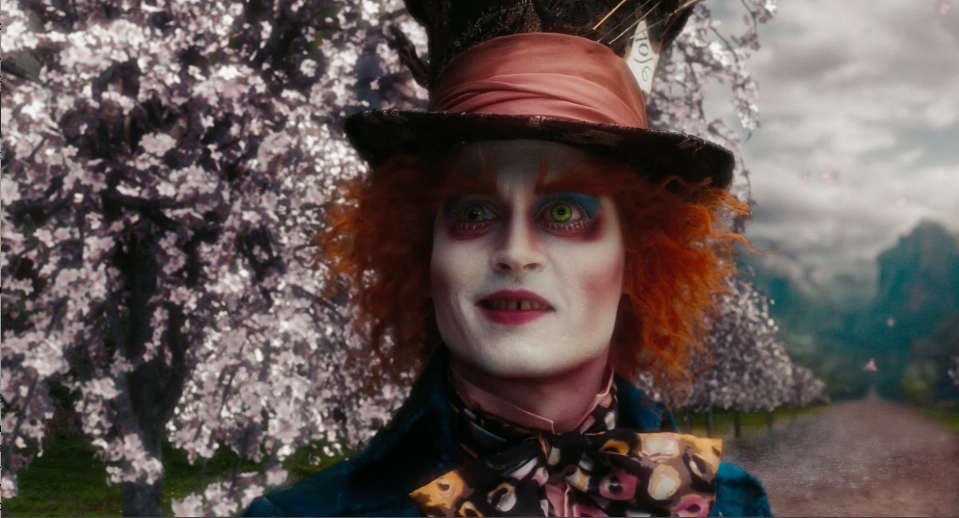Why Alice in Wonderland Matters to Hollywood
Peter Decherney’s expertise on the importance of the public domain for Hollywood led him to file an amicus brief the Supreme Court case of Golan v. Holder that discusses Hollywood’s reliance on the public domain. (Watch a video of Peter Decherney discussing public domain.)
In this excerpt from the amicus brief, Decherney, author of Hollywood’s Copyright Wars: From Edison to the Internet describes how Hollywood relies on public domain in times of crisis and how it allows a freedom for technological innovation:
More recently, Hollywood producers have regularly returned to the well of the public domain during times of crisis in the industry. In the 1990s, for instance, the Miramax Company, New Line Cinema, and other independent film producers began to make significant inroads into the American box office and home video markets with literate films, including My Own Private Idaho (1991) (based on Shakespeare’s Henry IV) and a string of Jane Austen and Henry James adaptations, all based on public domain works. Hollywood studios responded with their own cycle of adaptations of European and American public domain literature, including The Last of the Mohicans (1992), The Three Musketeers (1993), The Age of Innocence (1993), and Romeo + Juliet (1996).
Hollywood is in crisis mode again today, responding to competition from other forms of entertainment, combating piracy, and trying to justify heavy investments in 3-D technology. In this environment, original films such as Avatar (2009) are aberrations. As they have in the past, Hollywood studios have returned to tried and trusted titles. It is telling that the second most successful 3-D film after Avatar is Tim Burton’s new take on Alice in Wonderland (2010). As has been the case for over 100 years, the name recognition and familiar characters of Alice continue to smooth the transition to new technologies; when audiences decide to spend more money to experience the novelty of a 3-D film, it is easier to imagine how a trusted public domain property will look than to hazard their extra dollars on a new film.
To emphasize his point, Decherney provides a list of U.S. films influenced by Alice’s Adventures in Wonderland (he also provides a list of remakes):
Alice Comedies (1924-1927, Walt Disney and Ub Iwerks, Walt Disney Productions)
Alice in US Land (1932, Paramount News newsreel feature about Alice Liddell’s visit to New York City)
Betty in Blunderland (1934, Dave Fleischer, Fleischer Studios)
Thru the Mirror (1936, David Hand, Walt Disney Productions)
“Swee’pea Through the Looking Glass” Popeye (1960, Jack Kinney, Jack Kinney Productions)
Alice in Wonderland (or What’s A Nice Kid like You Doing in a Place like this?) (1966, Alex Lovy, Hanna-Barbera Productions)
Alice of Wonderland in Paris (1966, Gene Deitch, Rembrandt Films)
Alice in Wonderland: An X-Rated Musical Fantasy 1976, Bud Townsend, Cruiser Productions,General National Enterprises)
Cosmos: A Personal Voyage (Episode 9: The Lives of Stars) (1980, Adrian Malone, KCET, Carl Sagan Productions, BBC)
Dreamchild (1985, Gavin Millar, PfH Ltd., Thorn EMI)
A Nightmare on Elm Street 4: The Dream Master (1988, Renny Harlin, New Line Cinema, Heron Communications, Smart Egg Pictures)
The Matrix (1999, Andy Wachowski and Lana Wachoski, Warner Bros. Pictures, Village Roadshow Pictures)
Resident Evil (2002, Paul W.S. Anderson, Constantin Film Produktion, Davis-Films, Impact Pictures)
Brandy & Mr. Whiskers (2004-2006, Russell Marcus, Toon City, Walt Disney Television Animation)
Lost (2004-2010, J.J. Abrams, Jeffrey Lieber, and Damon Lindelof, ABC Studios, Touchstone Television, Bad Robot)
Charmed (Season 8 Episode 2: Malice in Wonderland) (2005, Mel Damski, Paramount Pictures, Spelling Television, Viacom Productions)
Phoebe in Wonderland (2008, Daniel Barnz, Silverwood Films)
Warehouse 13 (“Season 1 Episode 8”) (2010, JaneEspenson, D. Brent Mote, Universal Cable Productions, Universal Media Studios)
Alice in Wonderland (2010, Tim Burton, Walt Disney Pictures)



1 Response